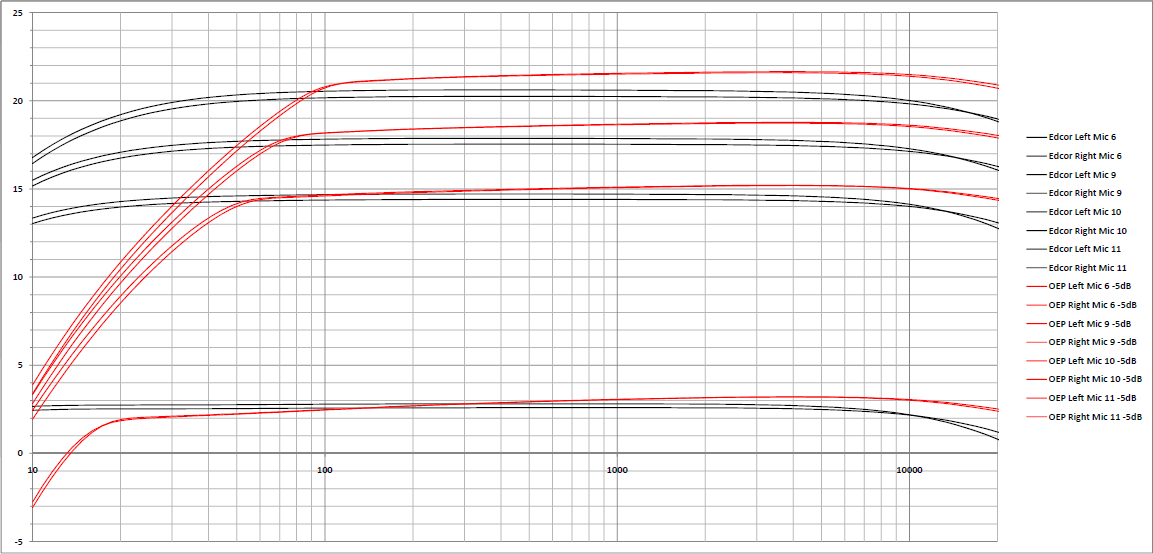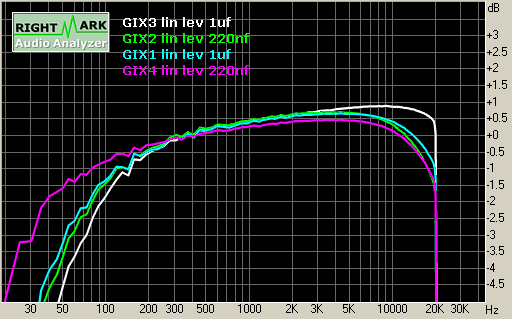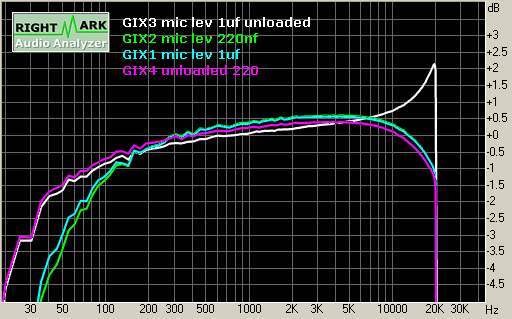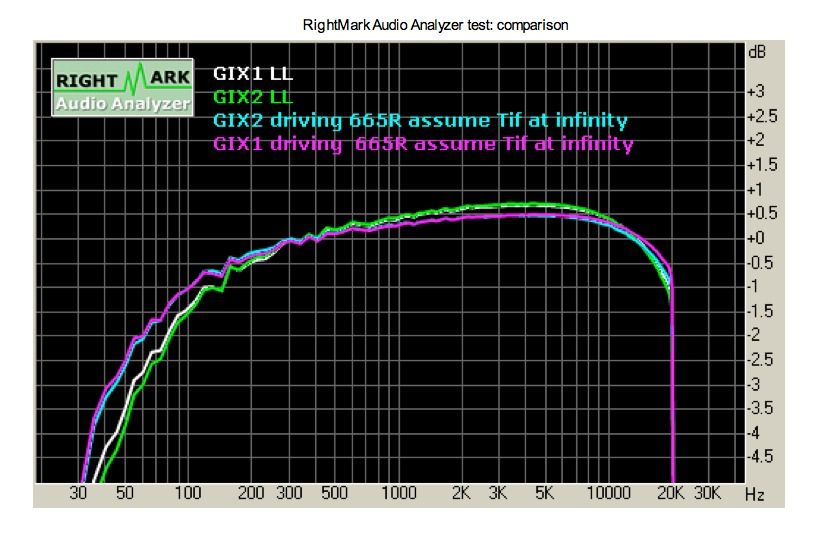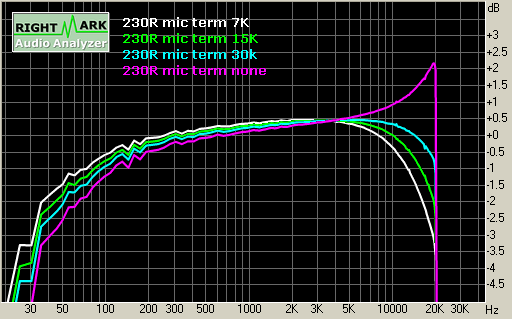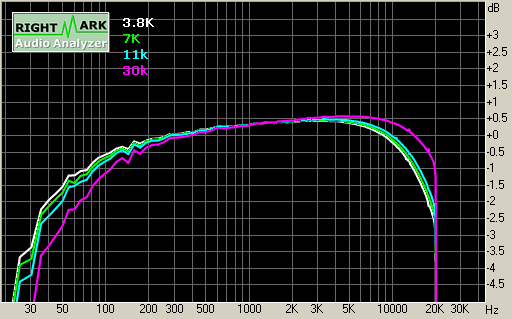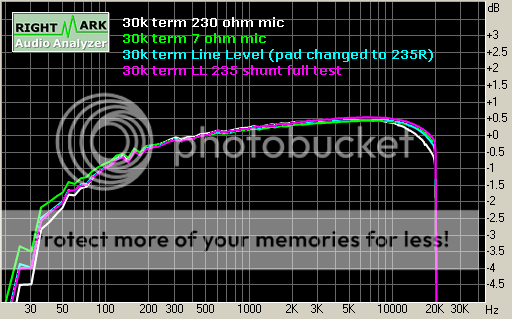i have been running various tests with the G9 (GIX51x) circuit and here are some frequency response related comments, I will endeavor to post data to support these, but I need to do a little more measuring of my recently created test gear to make sure I am posting solid info.
I am interested in the input trafo, termination, impedance and freq resp impact
I have 4 modules under test, they differ by the Value of C2, and the type of trafo's, otherwise identical except individual component variations:
| Name | Input | Output | Ratio | Zi Input trafo | Zo Input trafo | Comments | | | |
| GIX1 | LL1538 | LL5402 | 1:5 | Test Driver (>6 ohms) in Mic mode, in Line mode it is 460 ohms | Line mode 11500 ohms | C2 is 1uf | | | |
| GIX2 | LL1538 | LL5402 | 1:5 | 460 ohms 1/(1/470 +1/(4700*2 + 6810*2)) in Line mode | Line mode 11500 ohms | C2 is 220nf | | | |
| GIX3 | OEP A262A3E | OEP A262A2E | 1:6.45 | Mic in Mic mode, 460 ohms in Line mode | Line mode 19137 ohms | C2 is 1uf | | | |
| GIX3 | Cinemag 75101APC | OEP A262A2E | 1:10 | Mic in Mic mode, 460 ohms in Line mode | Line mode 46000 ohms | C2 is 220nf | | | |
notes:
1) The low frequency response is improved by using the Mic mode rather than line mode. I think that the input impedance of the Mic/Lin pad might be lower than appropriate. Perhaps lowering the 470 Ohm Shunt resistor and accepting an overall lower Line mode input impedance would extend the low end in line mode.
Sweep detail (below):
Line level signal, line mode, output unloaded except normal 10K resistors on schematic
Note high frequency peak on GIX3/OEP input (ringing?)
Note extended low end on Cinemag trafo (Perhaps due to ratio... it appears to be 1:10 as wired).
Sweep Detail (below):
Mic level input, mic mode, output unloaded except normal 10K resistors on schematic.
Input from Test Interface, pad creates very low input impedance (>6ohms).
The OEP input transformer rings like a silver dollar.
Upping C2 improves low frequency response measurably but only marginally (comparing GIX1 and GIX2 both Lundahl in and Out). Note that the response of the Lundahls in Mic and Line mode is very similar, whereas the OEP is totally different (extends LF and Rings). The Cinemag is also similar regardless of mic/line. Perhaps the OEP needs some sort of termination on the Input trafo?
Sweep detail, comparing Cap size and output loading. First unloaded, second 665Ohms. GIX 1 - C2 is 1uf, C2 is 220nf.
More to follow...
One note: The Gyraf schematic calls for a Lundahl 1528, but the GIX calls for a 1538. Are the specs of those pretty much the same as wired?



